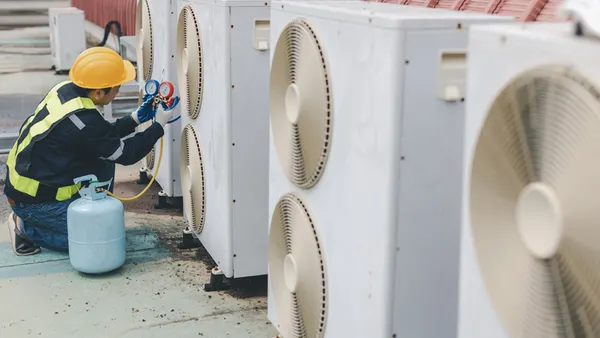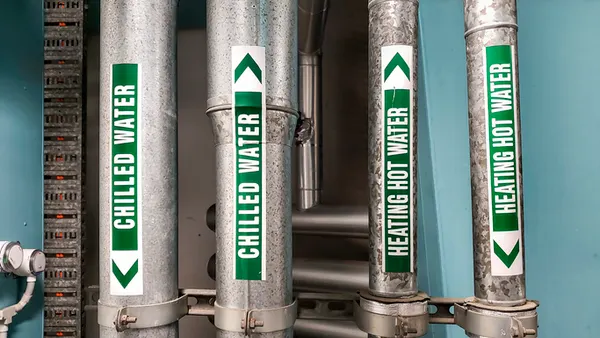Transportation Secretary Pete Buttigieg and Energy Secretary Jennifer Granholm stressed the importance of their agencies working together under a new national blueprint released Tuesday that aims to eliminate greenhouse gas emissions from the transportation sector by 2050.
Buttigieg said during the Transportation Research Board’s, or TRB’s, annual meeting in Washington, D.C. on Wednesday the Biden administration is focused on working with states to build out a national EV charging network and ensuring such infrastructure is added in rural areas, at multifamily dwellings and low-income communities.
To accomplish this, the blueprint tries to meet people where they are: People tend to drive longer distances in rural areas, he said, stressing the potential gas savings, and they live in single-family housing, allowing them to charge at home.
But to achieve those goals, the two agencies must work together.
“This blueprint allows for this kind of cooperation,” said Granholm. “Having one goal, driving towards that one goal, and bringing to bear the equities of each of our offices is just really important.”
A network that places chargers every 50 miles along interstate highways in a way that is tailored to each state and locality is “significant,” Granholm said. “All of this is being done in partnership and in collaboration, and that’s what the blueprint is all about.”
To decarbonize the transportation sector, the U.S. National Blueprint for Transportation Decarbonization aims to increase convenience and efficiency and transition to clean options. The strategy will focus on research and investment to support deployment before 2030, then shift to scaling up clean solutions deployment between 2030 and 2040 and complete the transition between 2040 and 2050.
During the TRB meeting, Jennifer Homendy, chair of the National Transportation Safety Board, said she supports the transition to EVs but cautioned against advancing the technology too fast and stressed the importance of keeping Vision Zero goals at the forefront. She called out the heavy and fast-accelerating electric SUVs and pickup trucks being rolled out, including GMC’s new Hummer EV, which has a battery pack that weighs as much as a Honda Civic, raising the risk of killing or injuring pedestrians and other road users.
Granholm said the agency is working to lower the cost of producing batteries to help drive down the cost of buying an EV, noting that with tax credits, vehicles such as the Chevrolet Bolt are affordable to many Americans.
Due to growing demand and federal grants, 75 companies are opening in the U.S. that are working on various aspects of producing EV batteries, such as manufacturing the batteries, critical minerals processing, or being involved in some piece of the supply chain, Granholm said. Those jobs had previously been located in countries that are considered economic competitors.
“It’s coming to the United States because of policy. Policy really does make a difference,” she said.
Buttigieg said the transportation economy was moving towards EVs but not fast enough to meet U.S. energy goals. He added that the rollout needed to be equitable, which is why the federal investments in the bipartisan infrastructure law and the Inflation Reduction Act were needed.
Granholm said virtual power plants would help bring resiliency to the grid, while new transmission lines added through the infrastructure law will add greater capacity. Buttigieg said the infrastructure law is also helping transit agencies purchase electric vehicles.
“We’re putting our money where our mouth is,” Buttigieg said. The infrastructure package “makes the biggest investment in public transit at the federal level in the history of U.S. transportation.”
He added, “Even if we weren’t aggressively trying to decarbonize the system of transportation, that alone is one of the biggest and best things we could do from a climate perspective.”














